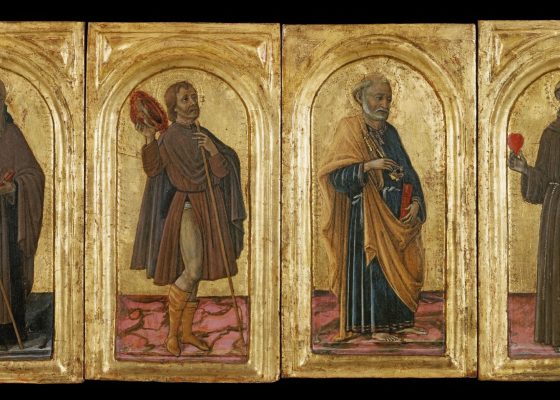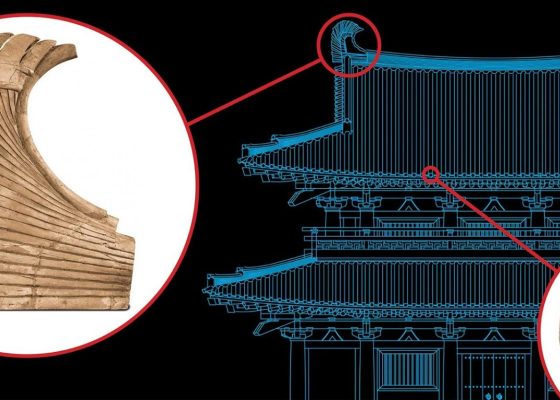By Hendon Harris
While our contemporary traditions say to celebrate by spoiling, coaxing or courting our object of affection, the day serves an opportunity to explore love in all her facets—from shallow to deep.
It is still open for interpretation how Valentine’s Day came about, as there are many theories of its origin.
Most people today associate the holiday with Saint Valentine, who served during the third century in Rome—who broke the Roman laws by performing weddings for young couples in secret against the decree of Emperor Claudius II.

Others believe Valentine’s Day has its roots in the pagan holiday of Lupercalia. As a homage to Faunus, the Roman god of agriculture and fertility, Lupercalia, commonly took place on February 15. This theory suggests that Valentine’s Day was enacted by the church as a way to Christianize the pagan festival.
Regardless of its origin, by the 17th century, Valentine’s Day had gained momentum in Great Britain. By the middle of the 18th century, it was totally mainstream: a day when friends and lovers of all social classes exchanged small tokens of affection or handwritten notes.
Today, Valentine’s Day is also celebrated in the US, Canada, Mexico, France and Australia.
In America alone, Valentine’s Day customers spend $17.3 billion dollars. Along with flowers and confections, 19% will purchase jewelry, according to the National Retail Federation.
Speaking of jewelry—on a day notorious for love and the color red—what better embodies the heart than a passionate, red ruby?
The Ruby
The name ruby is derived from the Latin word ruber, which means red.
The ruby is referred to four times in the Bible for qualities such as beauty and wisdom, says GIA, the world’s authority on diamonds, colored stones, and pearls. It has been considered the most precious of the 12 stones created by God. GIA says, “As a symbol of passion, ruby makes an ideal romantic gift.”
This proved true throughout Europe, as for centuries the ruby was considered a perfect wedding stone for its association with love, passion and commitment.
The iconic Hollywood siren, Elizabeth Taylor who had a robust appetite for expensive jewelry—especially rubies—inspired her then husband, Richard Burton, to gift her with a ruby. This gem embodied Taylor’s own qualities of beauty, passion, and intensity. She would eventually find a 24ct ruby ring from Van Cleef & Arpels in her Christmas stocking. Later, the diamond-encrusted ruby ring broke the record for price per carat when it sold for $4,226,500.


Other famous rubies in history include the Black Prince’s Ruby and the Star of Bharany Ruby.
Rubies have their place in Eastern culture, too. Legend claims that an old Chinese emperor, upon seeing the majestic ruby proclaimed, “A city for a stone, a whole city for this stone!”
The Indians referred to rubies as Ratnanayaka, the lord of the gemstones. In other parts of Asia it is described as “a drop of the heart’s blood of Mother Earth.”
Because Asian culture regards the color red as good luck, also imbued with the ability to ward off evil, rubies were used to ornament armor and weapons, such as swords, scabbards and harnesses. It was even said warriors could make themselves invincible by inserting the stone into their flesh.
While Myanmar (modern day Burma) was the main source of deep red rubies for hundreds of years, now rubies also come from India, Thailand, Cambodia, Nepal, Vietnam, Pakistan, Macedonia and even Greenland.
But it is China today that holds more than 90% of the ruby market, where the stone remains popular and is featured in all kinds of illustrious jewelry.
Over the years, many physical and metaphysical properties have been attributed to the ruby including: dispelling sadness and fears, cleansing the blood, detoxifying the body, overcoming exhaustion and building endurance. It is believed that the ruby promotes commitment, courage, motivation, confidence, creativity, and self-love; it opens the heart and emotional connection.
And so, the ruby has acquired a name and reputation for itself; it is known as the gem of love.

Greater Love
While we may not all run out to the nearest jewelry store to purchase a ruby ring for our Valentine, we can still embrace the ruby’s deeper significance in our lives.
We can set our intention, not on the fleeting material and superficial elements of love, but rather on love’s everlasting virtues.
A reward comes when we commit to opening our hearts in all our relationships—to all beings, at all times. When we deepen our communication with loved ones by letting go of fears and limitations, the best version of our self shines forth.
We exhibit a greater love—compassion—by offering a helping hand to someone in need. When someone else agitates us, we express love when we shake it off with a smile.
We don’t need to wear a ruby to detoxify ourselves, to cast away darkness. Rather, we can actively clean our own minds of distracting thoughts, and this in turn improves our bodies.
When we truly think of others before ourselves, a wellspring of creativity comes forth, and our lives take on a fresh perspective.
Is this what it means to emanate Divine love?—when we choose to live in line with nature, with others, with our fellow man?
Quotes on Love
“Love does not dominate; it cultivates.”— Johann Wolfgang von Goethe
“The best and most beautiful things in this world cannot be seen or even heard, but must be felt with the heart.” — Helen Keller
“And remember, as it was written, to love another person is to see the face of God.”— Les Miserables
“I saw that you were perfect, and so I loved you. Then I saw that you were not perfect and I loved you even more.”— Angelita Lim
“At the touch of love everyone becomes a poet.”― Plato
“Being deeply loved by someone gives you strength, while loving someone deeply gives you courage.”— Lao-Tzu
Photo : Web












Cancel anytime


Using our website
You may use the The Middle Land website subject to the Terms and Conditions set out on this page. Visit this page regularly to check the latest Terms and Conditions. Access and use of this site constitutes your acceptance of the Terms and Conditions in-force at the time of use.
Intellectual property
Names, images and logos displayed on this site that identify The Middle Land are the intellectual property of New San Cai Inc. Copying any of this material is not permitted without prior written approval from the owner of the relevant intellectual property rights.
Requests for such approval should be directed to the competition committee.
Please provide details of your intended use of the relevant material and include your contact details including name, address, telephone number, fax number and email.
Linking policy
You do not have to ask permission to link directly to pages hosted on this website. However, we do not permit our pages to be loaded directly into frames on your website. Our pages must load into the user’s entire window.
The Middle Land is not responsible for the contents or reliability of any site to which it is hyperlinked and does not necessarily endorse the views expressed within them. Linking to or from this site should not be taken as endorsement of any kind. We cannot guarantee that these links will work all the time and have no control over the availability of the linked pages.
Submissions
All information, data, text, graphics or any other materials whatsoever uploaded or transmitted by you is your sole responsibility. This means that you are entirely responsible for all content you upload, post, email or otherwise transmit to the The Middle Land website.
Virus protection
We make every effort to check and test material at all stages of production. It is always recommended to run an anti-virus program on all material downloaded from the Internet. We cannot accept any responsibility for any loss, disruption or damage to your data or computer system, which may occur while using material derived from this website.
Disclaimer
The website is provided ‘as is’, without any representation or endorsement made, and without warranty of any kind whether express or implied.
Your use of any information or materials on this website is entirely at your own risk, for which we shall not be liable. It is your responsibility to ensure any products, services or information available through this website meet your specific requirements.
We do not warrant the operation of this site will be uninterrupted or error free, that defects will be corrected, or that this site or the server that makes it available are free of viruses or represent the full functionality, accuracy and reliability of the materials. In no event will we be liable for any loss or damage including, without limitation, loss of profits, indirect or consequential loss or damage, or any loss or damages whatsoever arising from the use, or loss of data, arising out of – or in connection with – the use of this website.
Last Updated: September 11, 2024
New San Cai Inc. (hereinafter “The Middle Land,” “we,” “us,” or “our”) owns and operates www.themiddleland.com, its affiliated websites and applications (our “Sites”), and provides related products, services, newsletters, and other offerings (together with the Sites, our “Services”) to art lovers and visitors around the world.
This Privacy Policy (the “Policy”) is intended to provide you with information on how we collect, use, and share your personal data. We process personal data from visitors of our Sites, users of our Services, readers or bloggers (collectively, “you” or “your”). Personal data is any information about you. This Policy also describes your choices regarding use, access, and correction of your personal information.
If after reading this Policy you have additional questions or would like further information, please email at middleland@protonmail.com.
PERSONAL DATA WE COLLECT AND HOW WE USE IT
We collect and process personal data only for lawful reasons, such as our legitimate business interests, your consent, or to fulfill our legal or contractual obligations.
Information You Provide to Us
Most of the information Join Talents collects is provided by you voluntarily while using our Services. We do not request highly sensitive data, such as health or medical information, racial or ethnic origin, political opinions, religious or philosophical beliefs, trade union membership, etc. and we ask that you refrain from sending us any such information.
Here are the types of personal data that you voluntarily provide to us:
As a registered users or customers, you may ask us to review or retrieve emails sent to your business. We will access these emails to provide these services for you.
We use the personal data you provide to us for the following business purposes:
Information Obtained from Third-Party Sources
We collect and publish biographical and other information about users, which we use to promote the articles and our bloggers who use our sites. If you provide personal information about others, or if others give us your information, we will only use that information for the specific reason for which it was provided.
Information We Collect by Automated Means
Log Files
The site uses your IP address to help diagnose server problems, and to administer our website. We use your IP addresses to analyze trends and gather broad demographic information for aggregate use.
Every time you access our Site, some data is temporarily stored and processed in a log file, such as your IP addresses, the browser types, the operating systems, the recalled page, or the date and time of the recall. This data is only evaluated for statistical purposes, such as to help us diagnose problems with our servers, to administer our sites, or to improve our Services.
Do Not Track
Your browser or device may include “Do Not Track” functionality. Our information collection and disclosure practices, and the choices that we provide to customers, will continue to operate as described in this Privacy Policy, whether or not a “Do Not Track” signal is received.
HOW WE SHARE YOUR INFORMATION
We may share your personal data with third parties only in the ways that are described in this Privacy Policy. We do not sell, rent, or lease your personal data to third parties, and We does not transfer your personal data to third parties for their direct marketing purposes.
We may share your personal data with third parties as follows:
There may be other instances where we share your personal data with third parties based on your consent.
HOW WE STORE AND SECURE YOUR INFORMATION
We retain your information for as long as your account is active or as needed to provide you Services. If you wish to cancel your account, please contact us middleland@protonmail.com. We will retain and use your personal data as necessary to comply with legal obligations, resolve disputes, and enforce our agreements.
All you and our data are stored in the server in the United States, we do not sales or transfer your personal data to the third party. All information you provide is stored on a secure server, and we generally accepted industry standards to protect the personal data we process both during transmission and once received.
YOUR RIGHTS/OPT OUT
You may correct, update, amend, delete/remove, or deactivate your account and personal data by making the change on your Blog on www.themiddleland.com or by emailing middleland@protonmail.com. We will respond to your request within a reasonable timeframe.
You may choose to stop receiving Join Talents newsletters or marketing emails at any time by following the unsubscribe instructions included in those communications, or you can email us at middleland@protonmail.com
LINKS TO OTHER WEBSITES
The Middle Land include links to other websites whose privacy practices may differ from that of ours. If you submit personal data to any of those sites, your information is governed by their privacy statements. We encourage you to carefully read the Privacy Policy of any website you visit.
NOTE TO PARENTS OR GUARDIANS
Our Services are not intended for use by children, and we do not knowingly or intentionally solicit data from or market to children under the age of 18. We reserve the right to delete the child’s information and the child’s registration on the Sites.
PRIVACY POLICY CHANGES
We may update this Privacy Policy to reflect changes to our personal data processing practices. If any material changes are made, we will notify you on the Sites prior to the change becoming effective. You are encouraged to periodically review this Policy.
HOW TO CONTACT US
If you have any questions about our Privacy Policy, please email middleland@protonmail.com
The Michelin brothers created the guide, which included information like maps, car mechanics listings, hotels and petrol stations across France to spur demand.
The guide began to award stars to fine dining restaurants in 1926.
At first, they offered just one star, the concept was expanded in 1931 to include one, two and three stars. One star establishments represent a “very good restaurant in its category”. Two honour “excellent cooking, worth a detour” and three reward “exceptional cuisine, worth a
Thank you for your participation,
please Log in or Sign up to Vote

123Sign in to your account